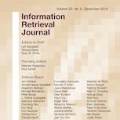Image super-resolution is important in many fields, such as surveillance and remote sensing. However, infrared (IR) images normally have low resolution since the optical equipment is relatively expensive. Recently, deep learning methods have dominated image super-resolution and achieved remarkable performance on visible images; however, IR images have received less attention. IR images have fewer patterns, and hence, it is difficult for deep neural networks (DNNs) to learn diverse features from IR images. In this paper, we present a framework that employs heterogeneous convolution and adversarial training, namely, heterogeneous kernel-based super-resolution Wasserstein GAN (HetSRWGAN), for IR image super-resolution. The HetSRWGAN algorithm is a lightweight GAN architecture that applies a plug-and-play heterogeneous kernel-based residual block. Moreover, a novel loss function that employs image gradients is adopted, which can be applied to an arbitrary model. The proposed HetSRWGAN achieves consistently better performance in both qualitative and quantitative evaluations. According to the experimental results, the whole training process is more stable.
翻译:光学设备相对昂贵,因此红外线(IR)图像通常分辨率较低。最近,深层次的学习方法主导了图像超分辨率,并在可见图像上取得了显著的性能;然而,IR图像受到的关注较少。IR图像的形态较少,因此,深神经网络很难从IR图像中学习不同的特征。在本文中,我们提出了一个框架,采用各种不同的演进和对抗性培训,即以混杂内核为基础的超分辨率瓦西斯坦GAN(HetSRWGAN),用于IR图像超分辨率。HetSRWGAN算法是一种轻量的GAN结构,应用了插和玩混合内核残余块。此外,采用了新的损失函数,使用图像梯度可以应用于任意模型。拟议的HetSRWGAN在定性和定量评价方面都取得一贯更好的业绩。根据实验结果,整个培训过程比较稳定。



